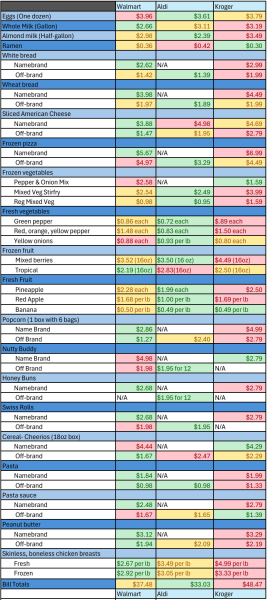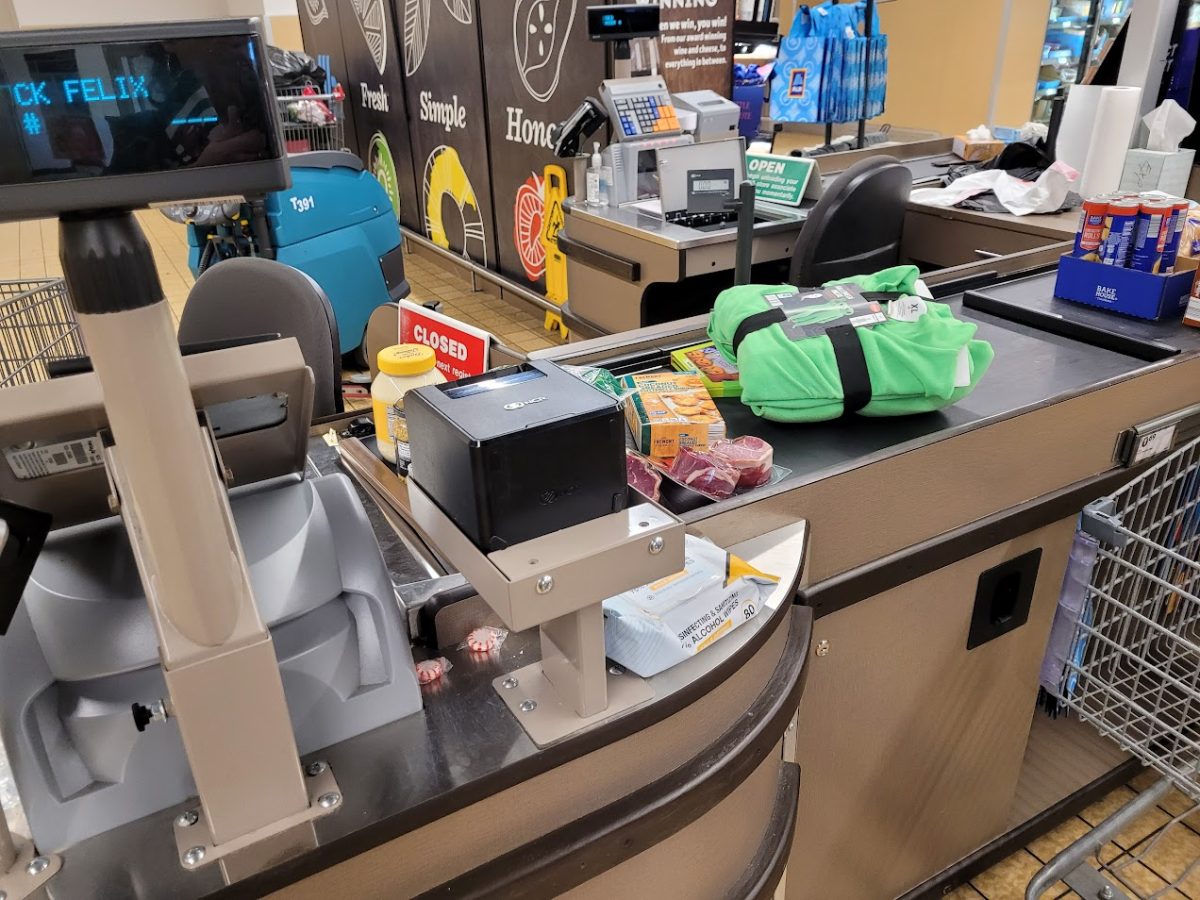The university experience often comes hand in hand with a number of stressors, certainly including but not limited to stress from finances, classwork, employment and expectations from family and friends. The cherry on top of this sundae is knowing we must still find time to look after our health, both physical and mental.
Our health is important, but it can easily slip to the backburner with so many other pressing priorities on the student’s plate. A basic tenet of survival is to eat — but knowing that does little to ease the looming sense of dread as the grocery bill ticks higher and higher at the register. While we’re tied up cramming our brains full of information, let this serve as a reminder that we can’t forget the importance of good food.
Collegevine reports the following items as being among the most frequently purchased by college students: prepared meals like Lean Cuisine and frozen pizza, instant noodles, fruits, veggies and convenient snacks like popcorn. Spoon University lists milk, cheese, bread, chicken, pasta and peanut butter. Some honorable mentions include cereal, hummus and almond milk.
Even if you’re not a college student, a lot of these items are universal in cooking and may frequent your shopping lists, nevertheless. No matter where you are in life, we all deserve the most affordable groceries available to us.
This week, I decided to visit some of Portsmouth’s largest grocery chains and compare the cost of these items to determine where we might be able to save a few bucks.
I first visited Walmart, then ALDI and finally Kroger. I determined which items to compare by using the information presented by Collegevine and Spoon University and by asking some of my peers what items they shop for themselves. I also compared the pricing of name-brand and off-brand products when available. Even if the product was out of stock, the price has been included. When I couldn’t find a comparable product either in the store or on their website, it was marked ‘N/A’.
Once the results were compiled together, I was able to decipher where, in general, the least expensive items were available for purchase. The results have been color-coded to make it easier to follow. The cheapest option is green, the middle is yellow, and the most expensive is red.

As you can see, each of the stores has something to offer. ALDI doesn’t frequently carry name-brand options, while Walmart and Kroger have a much larger selection available to their customers. However, that doesn’t necessarily matter if you’re most concerned about saving money.
Using the results, I selected the cheapest option available for each product, whether it was name brand or off brand, and produced a total for the final bill. ALDI came out on top, beating out Walmart at the register by $4.45. It may not seem like much at first, but that’s just one single trip to the store, assuming the list I carried with me checks off all your required items, as well. Kroger turned out to be the most expensive with its final bill priced higher than ALDI by $15.44.
Walmart’s and Kroger’s stock of groceries and household items remains largely the same, which can provide a sense of stability while you’re out shopping. You know their enormous stock is more than likely going to have all the odds and ends for your kitchen and home, but convenience comes with a price — one of roughly $4 to $15 with the average student’s grocery list in hand.
In terms of keeping costs low, ALDI is the champion, but they have more going for them than that. I returned to ALDI and spoke to one of their customers to establish what it was about the German grocery chain that brought them in that day. As it turns out, I’d snagged a regular customer.
Cameran Noel, who happens to be a Shawnee State graduate, has been shopping at ALDI since 2018. To start, I simply asked her, “Why ALDI?” and her answer was just as quick to the point. “It’s cheaper, but I like the quality, too,” she said.
She said she occasionally shops elsewhere for things like name-brand products or items that ALDI’s smaller stock may not include, but she added that she can get everything she needs at ALDI “most of the time.” She reiterated that it really only comes down to infrequent occasions when she may need something they don’t typically carry.
I asked her to reflect upon what ALDI provides for her as a customer, and Noel was eager to share that their prices were not only reliably low, but that their “stock is always changing.”
We happened to be standing in an aisle in ALDI that carries the majority of their seasonal products, and she pointed out the nearby selection of kids’ clothes, games and other necessities, the majority of which were themed for the upcoming Halloween season.
“They always have really good stuff for kids, too,” she remarked.
ALDI carries regular stock of grocery staples like bread, eggs, milk and peanut butter, but they also have seasonal items that could change week by week, such as specialty German chocolates and Halloween costumes in adult-sized onesies. For the upcoming Christmas season, you may expect to see these items swapped out for stocking stuffers, decorations and goods in the spirit of the season. This makes for a nice element of surprise if you’re in the mood to browse. You never know what you might find, even if it was an item not originally on your grocery list. This seems to keep regular customers, like Noel, coming back.
Those of us in university, or at home, have far too much on our minds to be eternally concerned about spending too much money on our necessities. Whenever your cupboards run dry and your fridge needs restocked, keep the price of convenience in mind when determining where to shop, and your wallet just might thank you for it.










